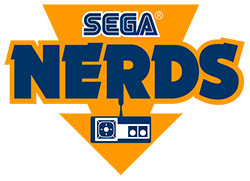
Love hertz, or ‘the PAL retro gaming conundrum’
Gaming in Europe sucked in the ’90s, although it’s probably fair to say that most of us stuck here in the Old World didn’t realise quite how much at the time.
While the wait for Japanese and American games to reach our pleasant shores was certainly ponderous and frustrating, the real sticking point was how inferior European localisations would often be, owing to the differences between our PAL TV standard, and their (or your, stateside readers) NTSC one.
Essentially, the former sports and onscreen image that’s updated up to 50 times a second and is made up of 625 lines, whereas the latter is faster, with a refresh rate of up to 60, yet only features 525 lines.

As a consequence, PAL releases usually ran 17.5 percent slower than their NTSC counterparts and featured a ‘letterbox’ effect, whereby the top and bottom of the screen were marred by distracting black bars. Pretty much the only exceptions to that rule were games that had been developed in Europe originally. Not only did the aforementioned performance deficit have a detrimental effect on gameplay, but sound was oftentimes affected too. Sonic the Hedgehog is a notable example, although in Sonic Team‘s defence, later installments did at least feature optimised music.
Thankfully, the rise of 60Hz HDTV has killed PAL off, making such concerns a thing of the past. Notably, PAL Dreamcasts were the first to offer a 60Hz option with compatible software.
But this whole scenario creates something of a dilemma for European gamers seeking an authentic retro experience. Most of SEGA‘s countless re-releases are simply emulated NTSC versions locked to the faster standard, and letterbox-less, even over here. By this point, most of us have become far more familiar with these reissues than the originals, thus tainting our recollection of what their flawed PAL iterations were actually like. To put it another way, a full, authentic PAL experience may be disappointing now the cat is out of the bag, and we know that the grass is greener on the other side of the Atlantic. Or Pacific.

Although much of the above is true for every pre-Dreamcast SEGA console, we’ll focus on the Mega Drive here, since it’s by far the most popular and fondly remembered of SEGA’s hardware offerings, and therefore the most likely jumping on point for any SEGA Nerd’s potential trip down memory lane.
So, what’s a 16-bit-starved European gamer to do? Well, it’s a toss up between modded consoles, or clone or imported hardware if you want to play that era’s golden oldies as they were intended to be enjoyed. Well, technically there are also the ever-recycled official Mega Drive clones to consider, pedaled over here by Blaze, but the less said of those the better. Hopefully if we ignore them, they’ll go away.
Modding SEGA consoles, particularly Mega Drives, is nothing new, with the most popular being 60Hz and region switches, plus altering the shape of the cartridge slot in such a way that foreign games will physically fit. Clone consoles often feature all of these things as standard, but can leave a lot to be desired in terms of build quality, be missing functions or incompatible with add-ons such as the Mega CD or 32X. Most importantly, though, they simply don’t offer the true SEGA experience.
Then again, if like me you’re none-too-handy with a soldering iron, playing Operation with an original console is likely a recipe for disaster. Thank God for the legion of tinkerers willing to do it for you – for a fee, of course.

Imported consoles bring with them a whole host of other headaches, not least of which is the fact that a ‘step down converter’ is required to operate NTSC consoles safely over here, lest they fry instantly the moment they’re booted owing to our higher voltage power outlets.
Furthermore, there’s the hassle and expense of only being able to play titles from the same region your console hails from, and unless you can read Japanese, or have a fan-translation to hand, anything too text-heavy may well be unplayable. On the plus side, though, if you bag yourself a vintage Japanese Mega Drive you’ll have a free pass to strut around the Internet like some awful gaming hipster, right?
So, while we Europeans have much to be thankful for in that we (usually) no longer have to endure an inferior console experience, look back a couple of decades and there’s many a stark reminder that this hasn’t always been the case. Five minutes of PAL Sonic the Hedgehog and you may come to realise that hindsight is indeed a wonderful thing.
Tread carefully, nostalgia fans.






